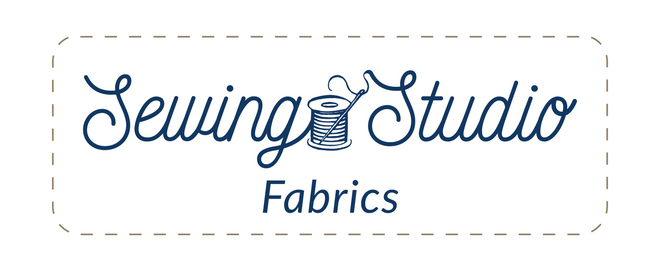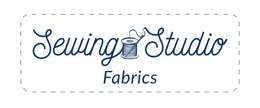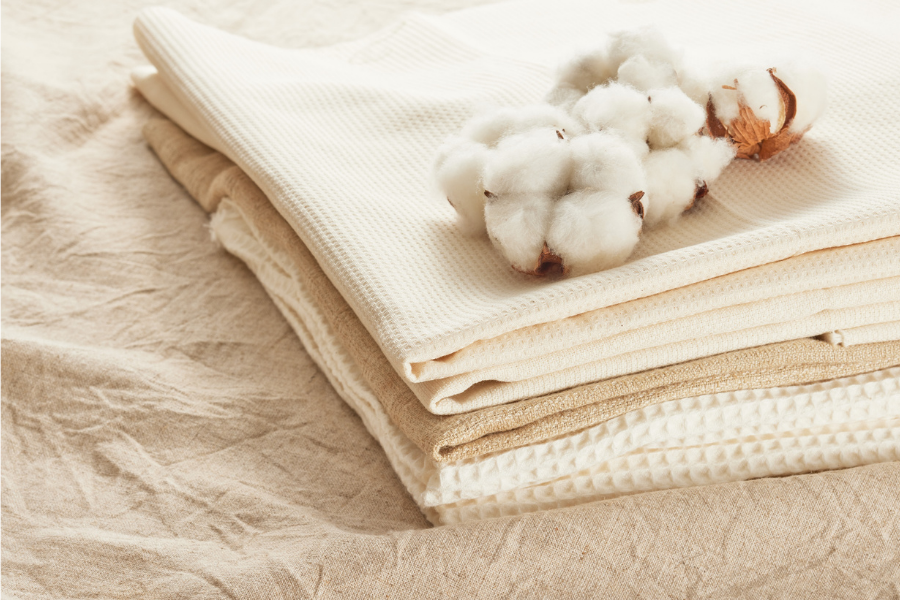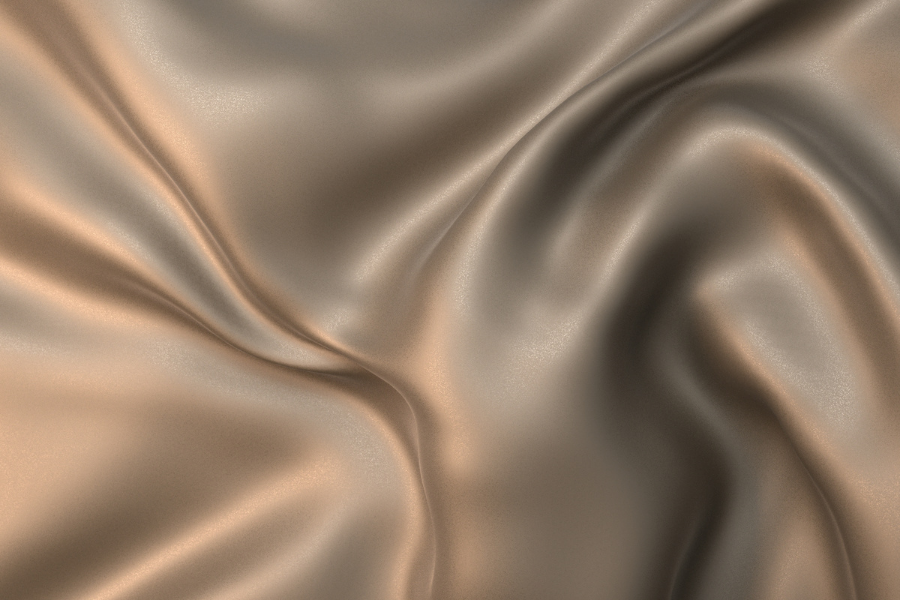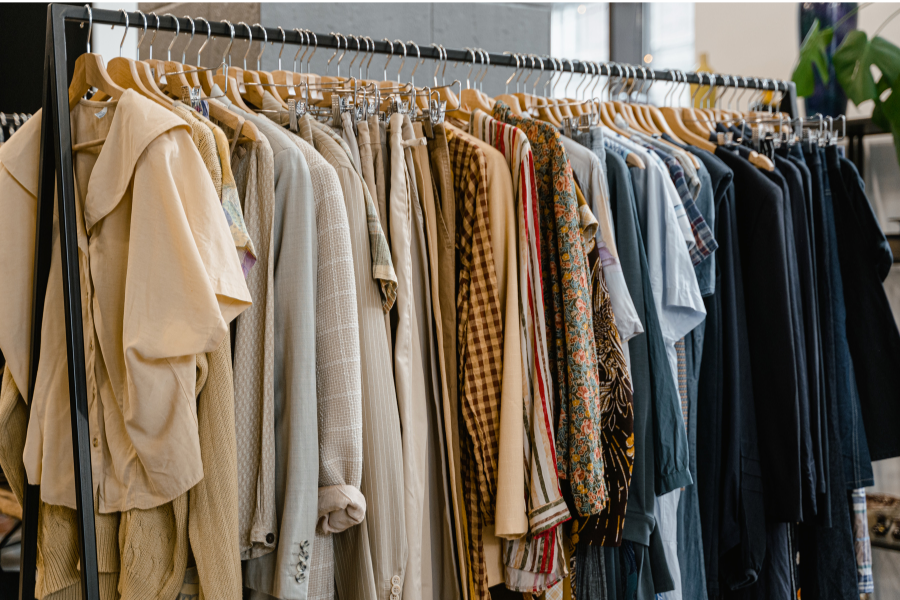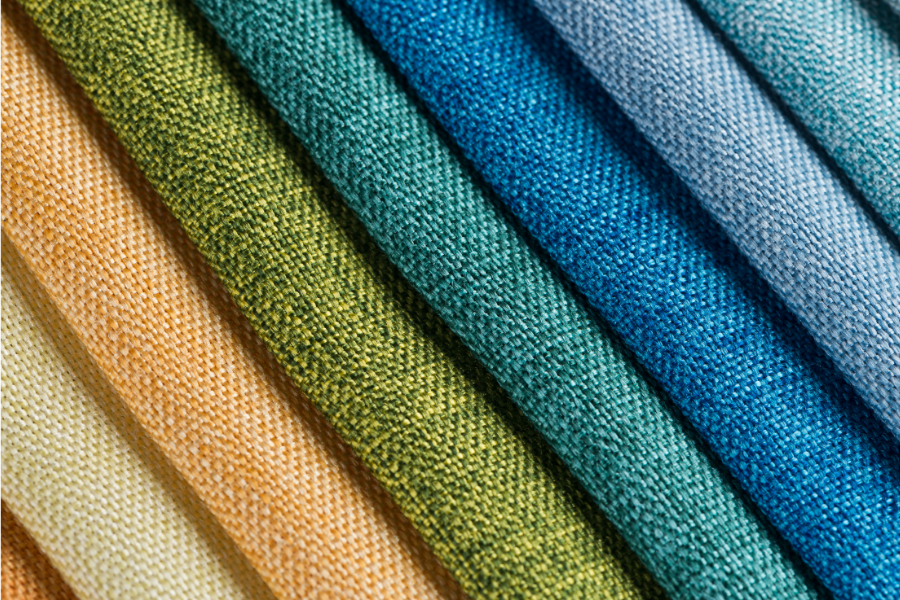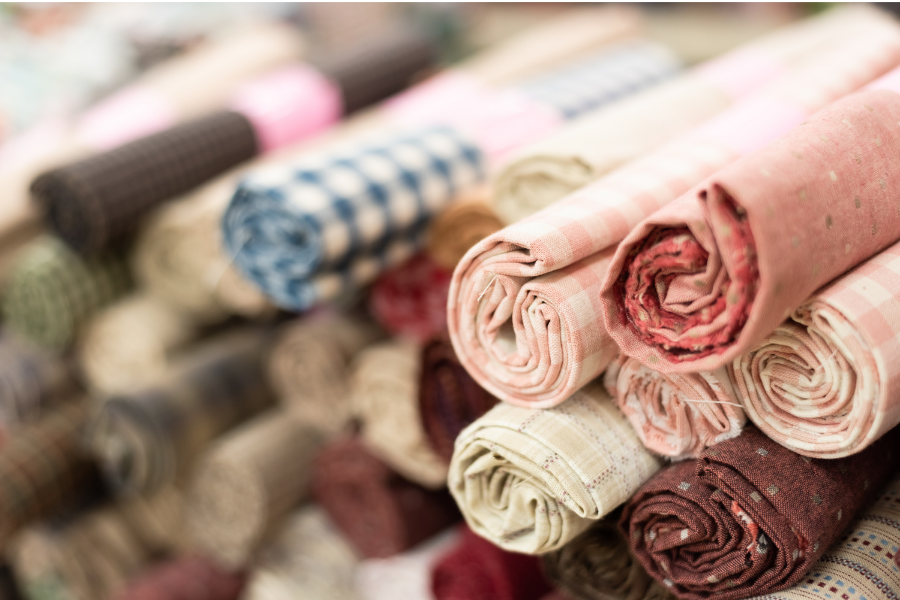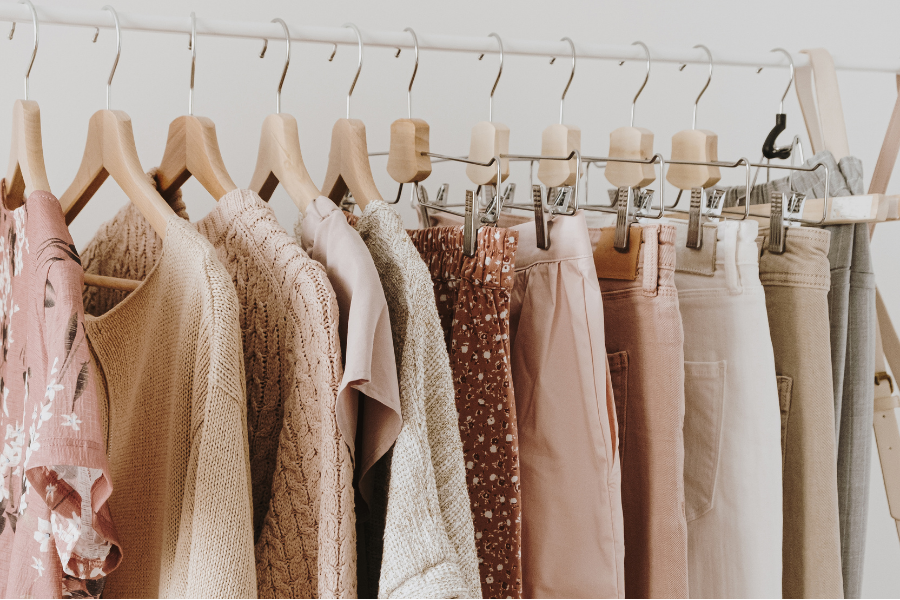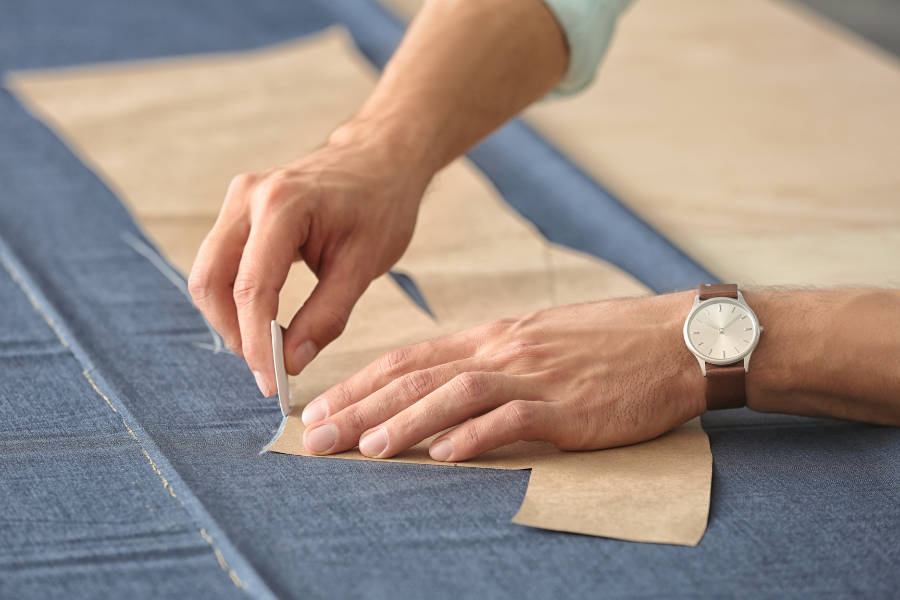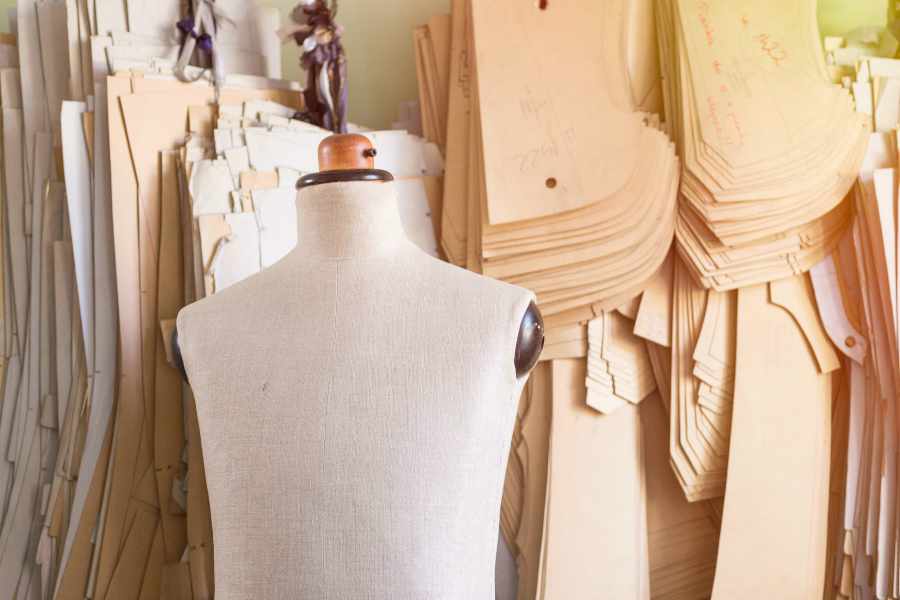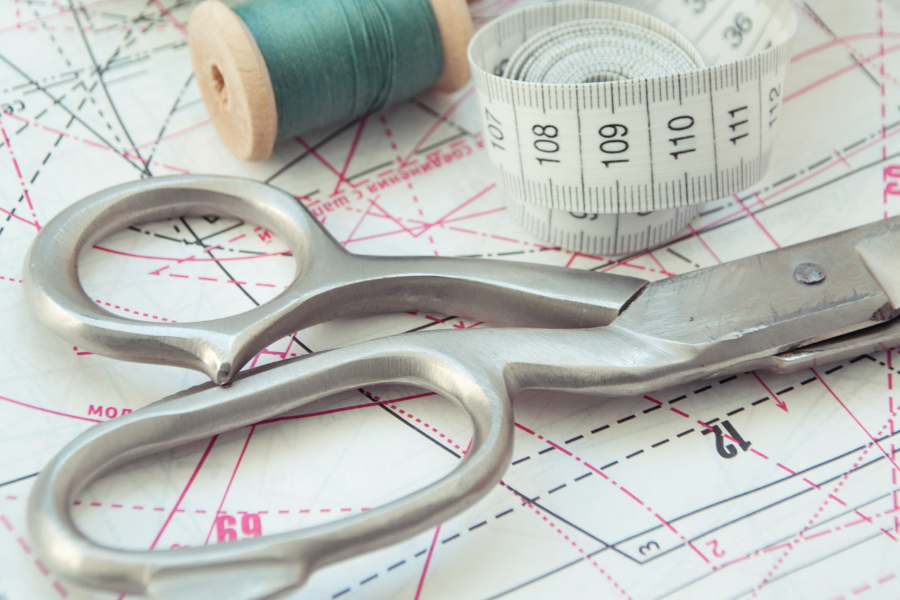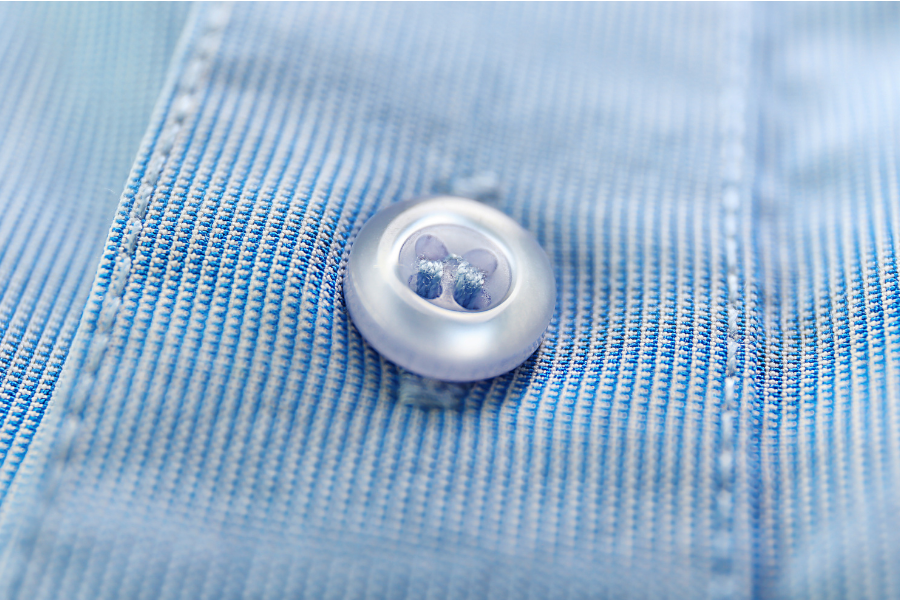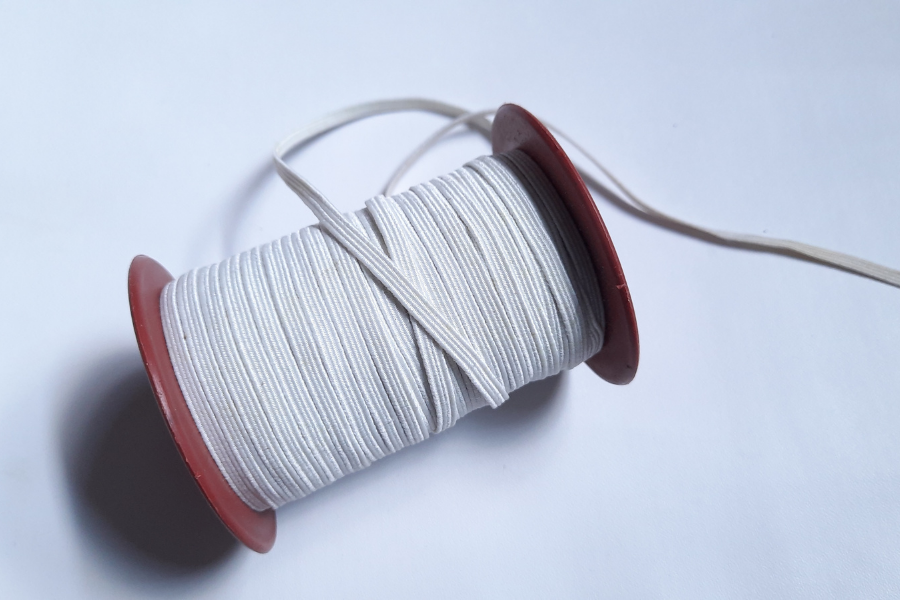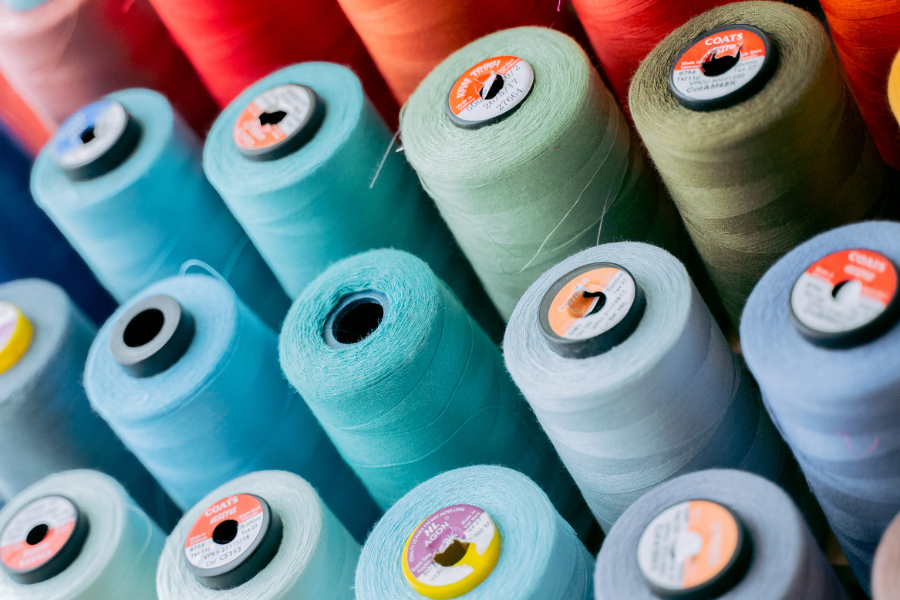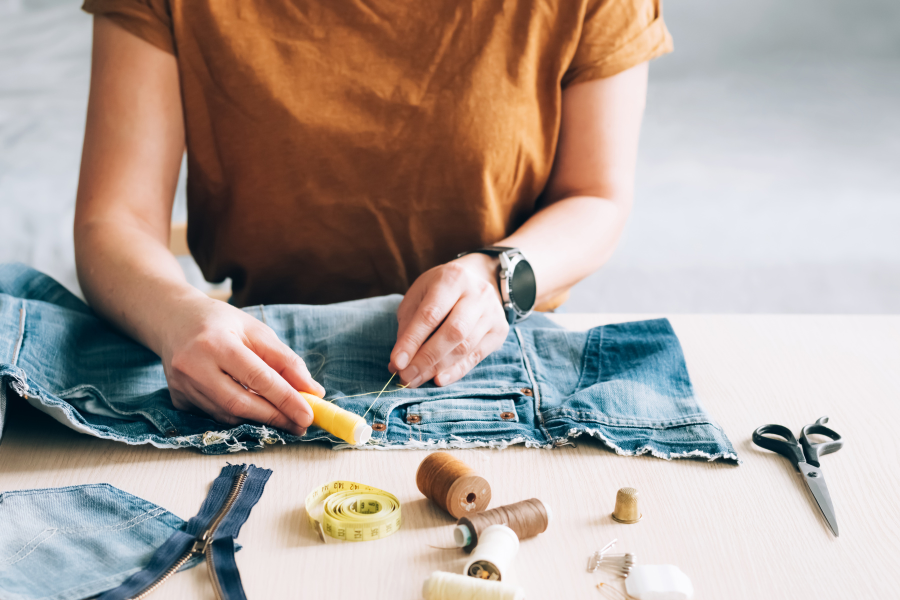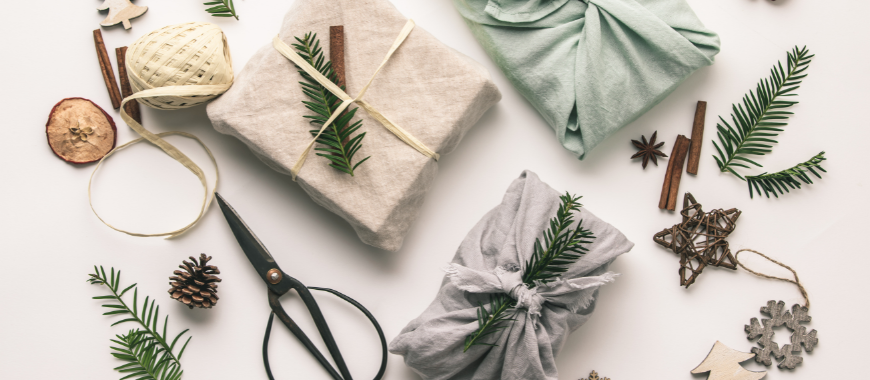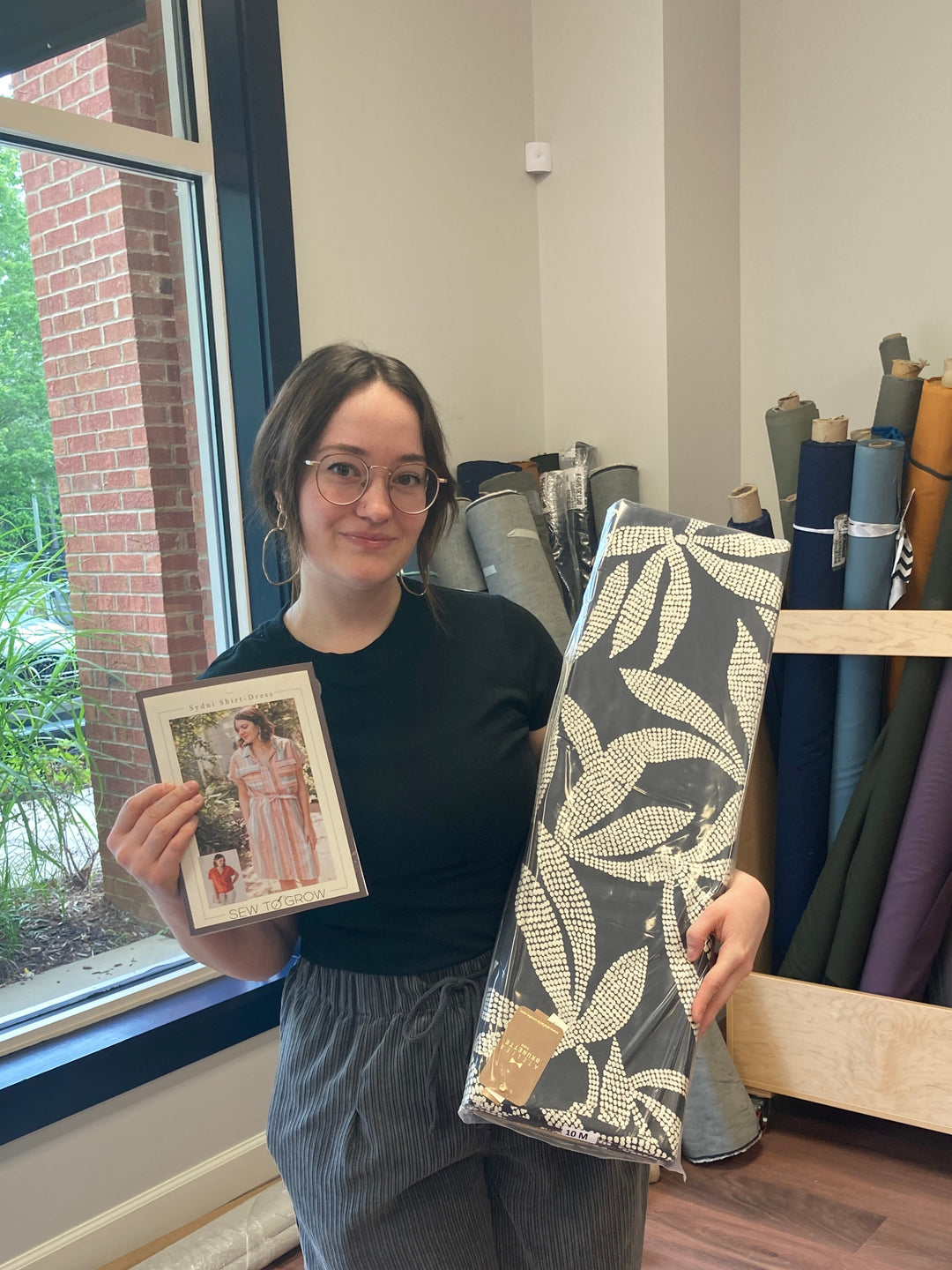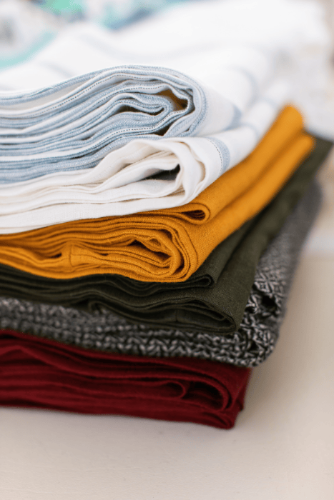Sewing Terms for Beginners

Any time you start a new craft or hobby, there are vocabulary words to learn. Sewing is no different, and it can be overwhelming to read a pattern and not understand the language. Over time, the words and definitions will become familiar, but there are some terms every beginner sewist should learn.
Pattern Terms
- Measurement chart: A table or chart on most patterns showing body measurements and the corresponding pattern size. To select your pattern size, use your body measurements, not ready-to-wear size. Be aware that each designer has their own measurements, so you need to review this chart with each new project.

- Seam allowance: Seam allowance is the distance from the raw edge of the fabric to the seamline (or seam stitch line). This allowance is usually hidden inside the garment once it is sewn. Make sure to reach each pattern, as not all seam allowances are the same – they will vary based upon the designer and the type of garment you are sewing.
- Ease – Difference between body measurements and garment measurements. Also defined as the amount of space in a garment that allows comfortable movement.
- Grainline: The grainline in sewing refers to the direction of the threads in a woven fabric. It typically runs parallel to the selvedge (see below). Long arrow symbol printed on a pattern that corresponds to the grain of the fabric. It is always placed along the lengthwise grain.

- Selvedge: The selvedge (or selvage) of a fabric is the tightly woven edge that runs parallel to the lengthwise grain. You may find the manufacturer information, or other fabric information here.
- Bias – True bias is a cut made on an angle 45° to the selvage. This direction allows for the most stretch. Bias refers to any line diagonal to the crosswise and lengthwise grains. Most bias pattern pieces are laid on the true bias; the grainline arrow and the pattern’s layout instructions will help you align your pattern pieces. With the trend of Bias skirts and dresses be sure to follow the designer’s specific layout instructions.
- Bodice – Upper-body portion of a garment that runs from shoulders to waist.
- Rotary cutter: A tool with a circular blade used to cut fabric. It must be used in combination with a mat.
- Cutting diagram: Pattern directions will show you how to place your pattern pieces in order to best use the fabric. Laying out your pattern on the fabric to prepare for cutting is an important step that must be done carefully and accurately for great-looking results.
- Pattern weights: Heavy objects used to hold down pattern pieces while cutting. Get creative and use cans from your pantry or purchase fun sewing weights. Pins may also be used instead. Use your weights or pins once your pattern pieces are properly aligned.
- On the fold: When a sewing pattern instructs you to place a pattern piece “on the fold,” it means you should align an edge of the pattern piece with the folded edge of the fabric before cutting. Typically the pattern piece will have an arrow on the side that should be placed on the fold.

- Notches: Notches are small marks or cuts made on sewing pattern pieces to help align and match fabric pieces together during the sewing process. Generally, single notches indicate the front of the garment and double notches are on the back. These are very important to a successful project. Make sure to take the time to make these onto your fabric, your future sewing self with thank you.

- Interfacing: Interfacing is a textile used on the wrong side of fabrics in stressed areas such as facings, collars, and button plackets. It can give a garment section more body or strength and prevent it from losing its shape. You can’t see it from the outside, but interfacing plays a part in your garment’s performance. There are many options for using either sewn-in or fusible interfacings.

Sewing Machine Terms
- Bobbin: A bobbin is a small cylindrical spool or reel that holds the lower thread in a sewing machine.

- Thread tension: Thread tension refers to the amount of resistance or tightness applied to the sewing machine’s upper thread as it passes through the machine. If you do not have properly balanced tension in your machine, your stitches will either be too tight or too loose.
- Stitch selection: Stitch selection refers to the process of choosing a specific type of stitch on a sewing machine for a particular sewing task or fabric type. Most common examples include a basic straight stitch, zig-zag stitch, or basting stitch.
Sewing Terms
- Baste: Basting is a temporary stitching technique used in sewing to hold fabric pieces together before permanent sewing.
- Staystitch: , Staystitching is row of straight stitching along curved or bias seamlines, prevents or minimizes potential stretching, so garment sections don’t become distorted during the construction process. Don’t skip this step, especially on lightweight fabrics.
- Seam finish: A seam finish is a method used to secure and neaten the raw edges of fabric seams to prevent fraying and add durability to the garment or project. There are many types of seam finishes, and the right one depends on the fabric type.
Pressing Terms
- Heat setting: Irons have different heat settings. You should select the appropriate one for your fabric type. Synthetic fabrics (polyester, nylon) should use low heat. Natural fibers (linen, cotton) can withstand higher heats.
- Pressing cloth: A scrap piece of fabric used between the iron and the project to protect the project.
- Steam: Many irons can hold water to produce steam. Steam helps shape projects and reduces waves in sewn seams.
Make sure to review our Blog all about the differences between Pressing vs. Ironing here:
Un-wrinkling the mystery of Pressing vs Ironing for Flawless Sewing

Conclusion
Feeling a little more confident with these sewing terms? Don’t be afraid to jump in and start practicing! The best way to learn these terms is by using them. Grab some fabric scraps, thread your needle, and get stitching. Remember, even the most experienced sewists started as beginners, and a bit of confusion is all part of the adventure. If you encounter a term you don’t quite understand, don’t be discouraged! Take a moment to look it up online or in a sewing reference book. Researching unfamiliar terms is a great way to deepen your knowledge and ensure your project’s success. Happy sewing!


